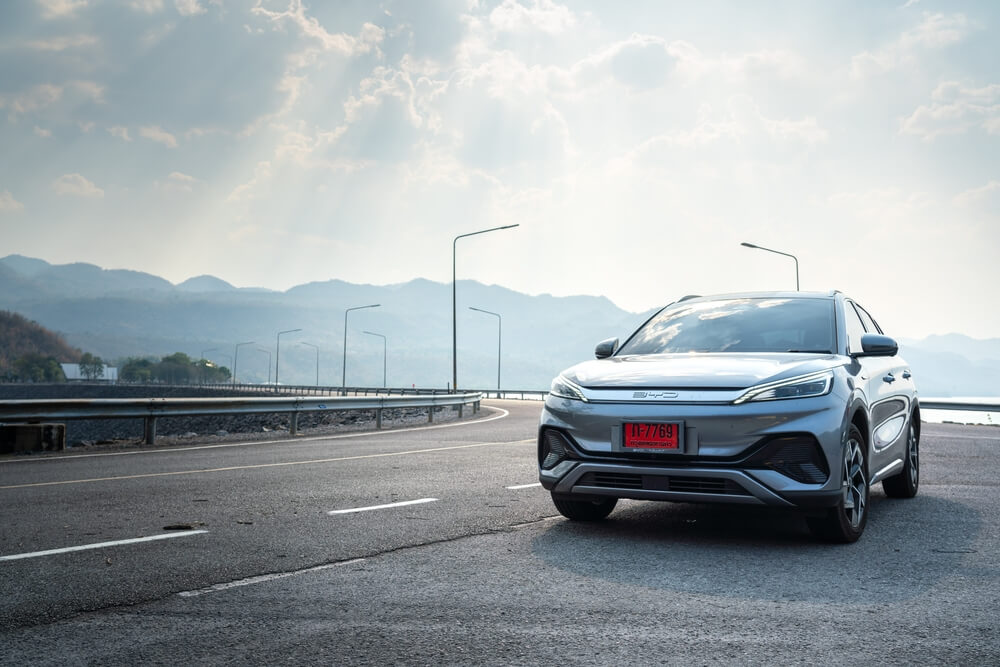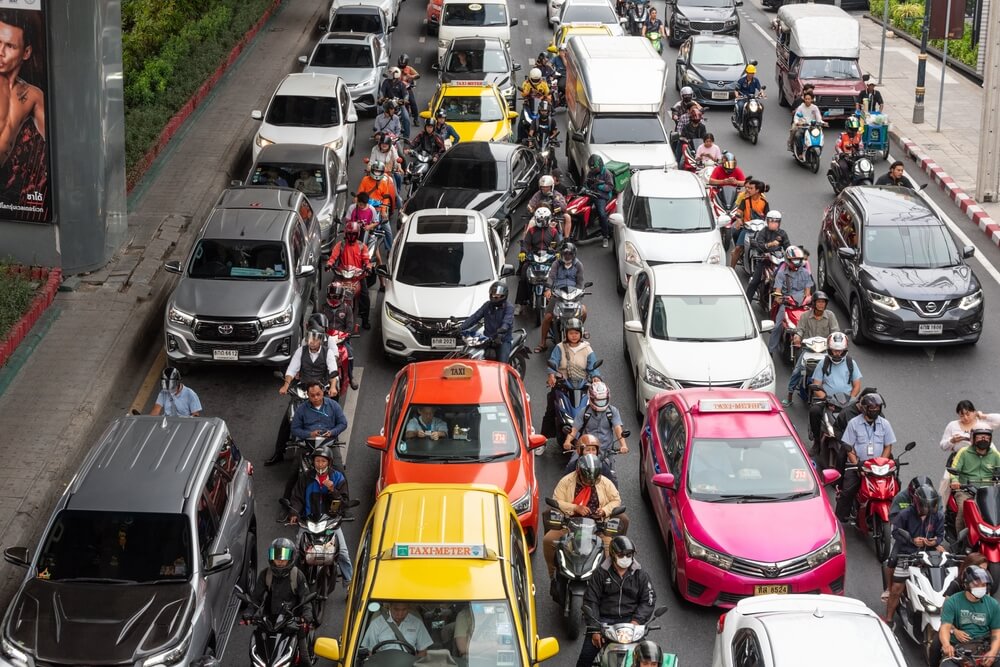Many tourists find driving in Thailand confusing and unsafe. The country drives on the left, and road rules can seem very different from home. This guide to Driving Culture In Thailand shows you what every tourist must know before renting a car or motorbike in 2025.
Read on for simple tips that keep your trip safe and stress-free.
Driving Rules and Regulations in Thailand
In Thailand, drivers must stay on the left side of the road. Tourists need a valid driving licence and should know local speed limits to avoid fines.
Driving on the left side of the road
Cars in Thailand drive on the left side of the road. Drivers sit on the right inside vehicles. Always keep to the left, especially at roundabouts and crossings. Overtake only from the right side.
Tourists may feel confused if they come from a country where people drive on the right. “Stay alert and check both sides before changing lanes,” says traffic officer Somchai Petchsuwan.
Watch for signs showing which way to turn or merge, as local rules may differ from home countries’ traffic laws.
Licence requirements for tourists
Tourists must hold a valid driving licence from their home country. An International Driving Permit (IDP) is also required with the original licence. Thailand accepts IDPs based on the 1949 Geneva Convention, not the 1968 Vienna version.
Car rental agencies will ask to see both documents before giving you a vehicle. Most companies require drivers to be at least 21 years old, but some may set higher minimum ages depending on their policy.
Authorities fine drivers without the correct paperwork and sometimes refuse insurance claims after accidents if you do not have an IDP. Always keep your passport, driving licence, and International Driving Permit with you during your journey for police checks or emergencies.
Riders of motorbikes must follow these same rules as car drivers regarding licences and permits in Thailand.
Speed limits in cities and highways
After you have the correct driving licence, pay close attention to speed limits. In most cities and towns, the speed limit for cars is 50-60 km/h. Highways often allow up to 90 or 100 km/h.
Toll expressways may permit speeds up to 120 km/h. Watch for signs as some areas might have lower limits due to road safety rules or traffic regulations.
Police set up frequent roadside checks in Thailand. The fines for speeding are strict and must be paid on the spot if caught breaking these traffic laws. Always drive at a safe speed as local roads can change conditions quickly with weather or roadworks.
Road Conditions and Common Challenges
Road conditions in Thailand can vary greatly. Cities often face heavy traffic, while rural areas may have poor lighting and potholes. Motorbikes weave through vehicles, making it crucial to stay alert.
Stray dogs on the roads can also pose a risk for drivers.
Urban traffic and congestion
Bangkok and Chiang Mai have heavy traffic, especially during rush hours. Drivers can expect long waits at intersections. Motorbikes often weave between cars and occupy narrow gaps, which demands extra care from car drivers.
Taxis, buses, and tuk-tuks may stop quickly or block lanes without warning.
Many city roads are crowded with street vendors or delivery vehicles that slow movement further. Daily congestion makes travel times unpredictable in large cities. Using a GPS app helps avoid major delays by suggesting better routes for your rental car journey.
Awareness of motorbikes and soi dogs
Urban traffic and congestion can be difficult to handle. Be alert for motorbikes, as they often weave in and out of lanes. They are common on Thai roads, especially in cities. These small vehicles can surprise drivers.
Always check your mirrors before changing lanes or turning.
Soi dogs are also a concern. These stray dogs roam freely in many areas. They can suddenly cross the road without warning. Slow down when you see them to avoid accidents. Staying aware of both motorbikes and soi dogs helps keep everyone safe on the road.
Drive with care; safety begins with awareness.
Navigating rural roads with poor lighting
Rural roads in Thailand often have poor lighting. Many areas lack street lights, making it hard to see. Drive slowly and carefully to avoid accidents. Use your headlights effectively; they will help you spot hazards ahead.
Be alert for animals on the road, like soi dogs or livestock. These can appear suddenly. Always stay focussed and watch for other vehicles too, as they may not use their lights properly either.
Keeping a safe distance is key while driving in these conditions.

Driving Etiquette and Behaviour
Drivers in Thailand should know how to act on the road. Always use your signals when changing lanes. Keep a safe distance from other cars. Be polite and patient, especially in traffic.
Awareness of local habits helps you drive better here. Want to learn more?
Passing other vehicles
Passing other vehicles in Thailand needs caution. Always check your mirrors and blind spots before making a move. Use indicators to signal your intentions clearly. Many drivers may not follow traffic rules strictly, so be alert.
Keep a safe distance when overtaking. Do not rush; wait for a clear path before passing. Some roads have double lines that mean no overtaking is allowed. Respect these markings to stay safe and avoid fines.
Using signals and hazard lights appropriately
Use your signals to show where you are going. Always signal before turning or changing lanes. This helps other drivers understand your intentions. Hazard lights are for emergencies only.
Turn them on if you stop in a dangerous place, like the side of the road.
Drivers in Thailand expect you to follow these rules for safety. Ignoring them can cause confusion and accidents on busy roads. Good communication is key while driving here. Following traffic laws helps ensure everyone’s safety, especially with unique challenges like motorbikes and soi dogs on the streets ahead.
Maintaining safe distances
Maintaining a safe distance is crucial while driving in Thailand. Keep at least two seconds between your car and the vehicle ahead. This gives you time to react if they suddenly stop or slow down.
Traffic can be unpredictable, especially with motorbikes weaving through lanes. Always be aware of your surroundings. In heavy traffic, keep an eye on nearby vehicles as well as pedestrians and soi dogs that might cross your path.
Tips for Renting a Vehicle in Thailand
Check the rental terms carefully. Ensure you have proper insurance and meet age requirements before signing any agreement.
Insurance and minimum age requirements
Most car rental companies in Thailand require drivers to be at least 21 years old. Some may set the minimum age at 23 or 25, depending on the vehicle type. Drivers under 25 may face extra fees.
Insurance is a must when renting a vehicle. Basic coverage usually comes with the rental, but tourists should consider buying additional protection. This can help cover damage or theft.
Always read the insurance terms carefully before signing any agreement.
Understanding rental costs and picking up your car
Rental costs in Thailand can vary. Prices depend on the type of car and rental duration. A compact car usually costs between 800 to 1,500 baht per day. SUVs and premium cars will cost more.
Always check what is included in the price. Some rentals include insurance; others do not.
Picking up your car is simple. Most rental companies have offices at airports or major cities. Bring your passport, driving license, and a credit card for payment. Inspect the vehicle before you leave; note any damages to avoid extra charges later.
Make sure you understand how to use the features of the car as well. Knowing these details helps ensure a smooth trip around Thailand’s roads and highways ahead.
Driving Culture in Thailand
Driving in Thailand can be exciting but requires careful attention. Tourists should follow local rules and stay aware of the road conditions. Understand the rental process, including insurance needs and age limits.
Safe driving habits are key to enjoying your trip. Prepare well for a smooth adventure on Thai roads.
At SPS Car Hire Pattaya, we have lots of cars for rent for affordable prices. Please click on the button below for more details. You can also click here to rent motorbikes in Thailand from us.


